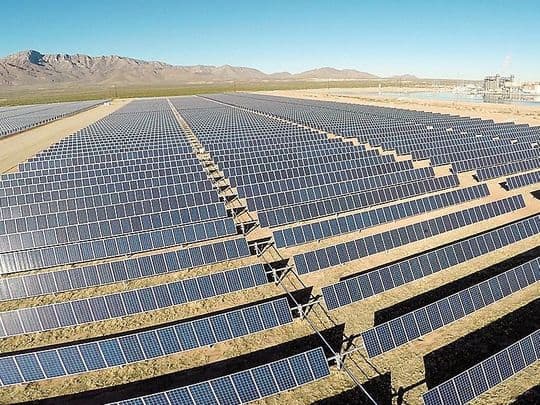
When GRID Alternatives was established in 2002, our founders led with a simple vision: clean, affordable electricity from the sun should be available to everyone. Since then, our nonprofit model has provided job training and installed more than 48 megawatts of solar benefiting communities who don’t have access to solar PV across the country, including here in New Mexico.
While solar is already providing significant economic and environmental benefits for nearly two million households nationwide, the majority of Americans face physical or financial barriers to the traditional rooftop solar.
Those economic barriers are even more pronounced in the Land of Enchantment, where more than 340,000 low-income households earn less than 80 percent of area median income. Across New Mexico 28,000 families live in publicly supported rental homes, while more than a third of owner-occupied households, and over 40 percent of renter-occupied households, spend at least a third of household income on housing costs.
That reality reveals a huge opportunity for New Mexicans to benefit from community solar, a policy already in place in 19 states and the District of Columbia. Community solar means that everyone can access the cost-saving benefits of solar by “subscribing” to a local solar installation and earning credits to lower utility bills. A single community solar projects can serve clean, local electricity to several hundred households and businesses at once, creating scale that helps bring down costs for everyone.
We’re thrilled that this year, state lawmakers introduced legislation to make community solar a reality in New Mexico. The Community Solar Act (HB 210) offers an unprecedented opportunity to expand solar access to all New Mexicans, including to low-income New Mexicans and Native American tribes and pueblos. The need for community solar is significant: New Mexico has one of the strongest solar resources in the country, yet access has been largely limited to onsite installations, or larger, utility-scale installations, leaving a critical gap for the more than one-third of New Mexicans who rent their homes or face other physical or financial barriers to rooftop solar.
The beauty of community solar is its tremendous potential to open up access to solar to those households most in need. Eleven states currently have community solar policies that include provisions for low-income customers. We can look to our neighbors to the north to see how it works, where Colorado lawmakers and advocates have established community solar as an effective tool to reduce energy burden for low-income households and help make housing more affordable.
Recent analysis also shows that the economic benefits of HB210 will reach far beyond customer savings. If passed, HB210 can increase New Mexico’s solar workforce by a third and generate $453 million in local economic benefits across the state.
When we recently heard from tribal members of Picuris Pueblo In northern New Mexico, we learned about the impact community solar is already having on the local economy. Jon Paul Romero, the executive director of the Northern Pueblo Housing Authority, described how Picuris Pueblo’s 1 megawatt solar array, which generates enough electricity to power 600 homes, lowers bills for those households and generates community-wide savings to pay down tribal programs that support the elderly and children.
“We take care of our people, and that was the goal of this solar project,” said Romero. “Our thinking was, if you can offset somebody’s bill and put more money back in their pocket, that’s something you’re doing for your whole people.”
Picuris Pueblo is one of 23 Tribes across New Mexico — nineteen Pueblos, three Apache tribes and the Navajo Nation, where I’m a member. Tribes located within New Mexico have various energy and policy goals, including solar development. HB 210 is one important step to helping tribes achieve those laudable goals.
The opportunity to let all New Mexicans benefit from our state’s plentiful sunshine is huge. We urge state senators to pass HB 210 and help give all New Mexicans the choice to go solar.
